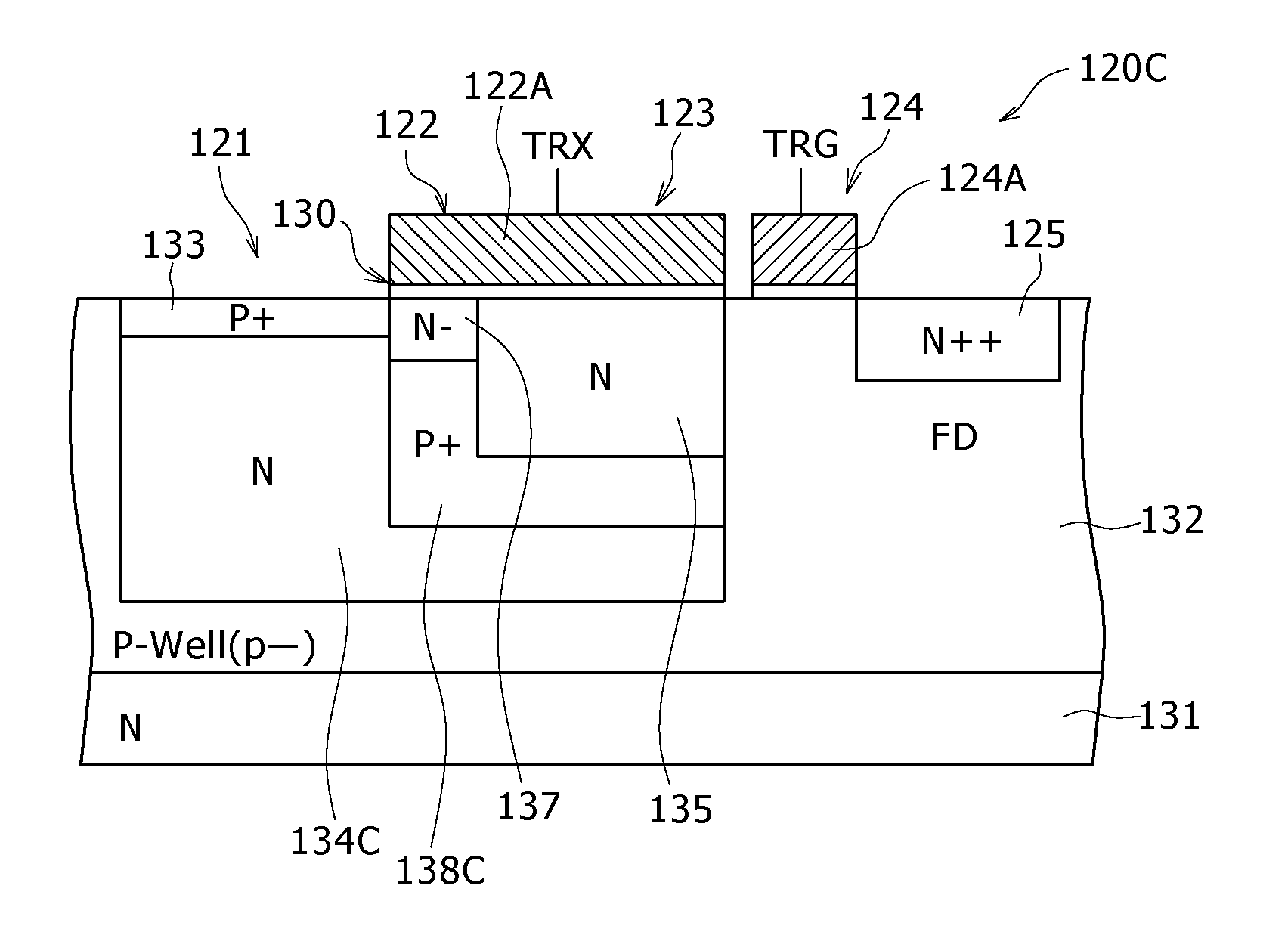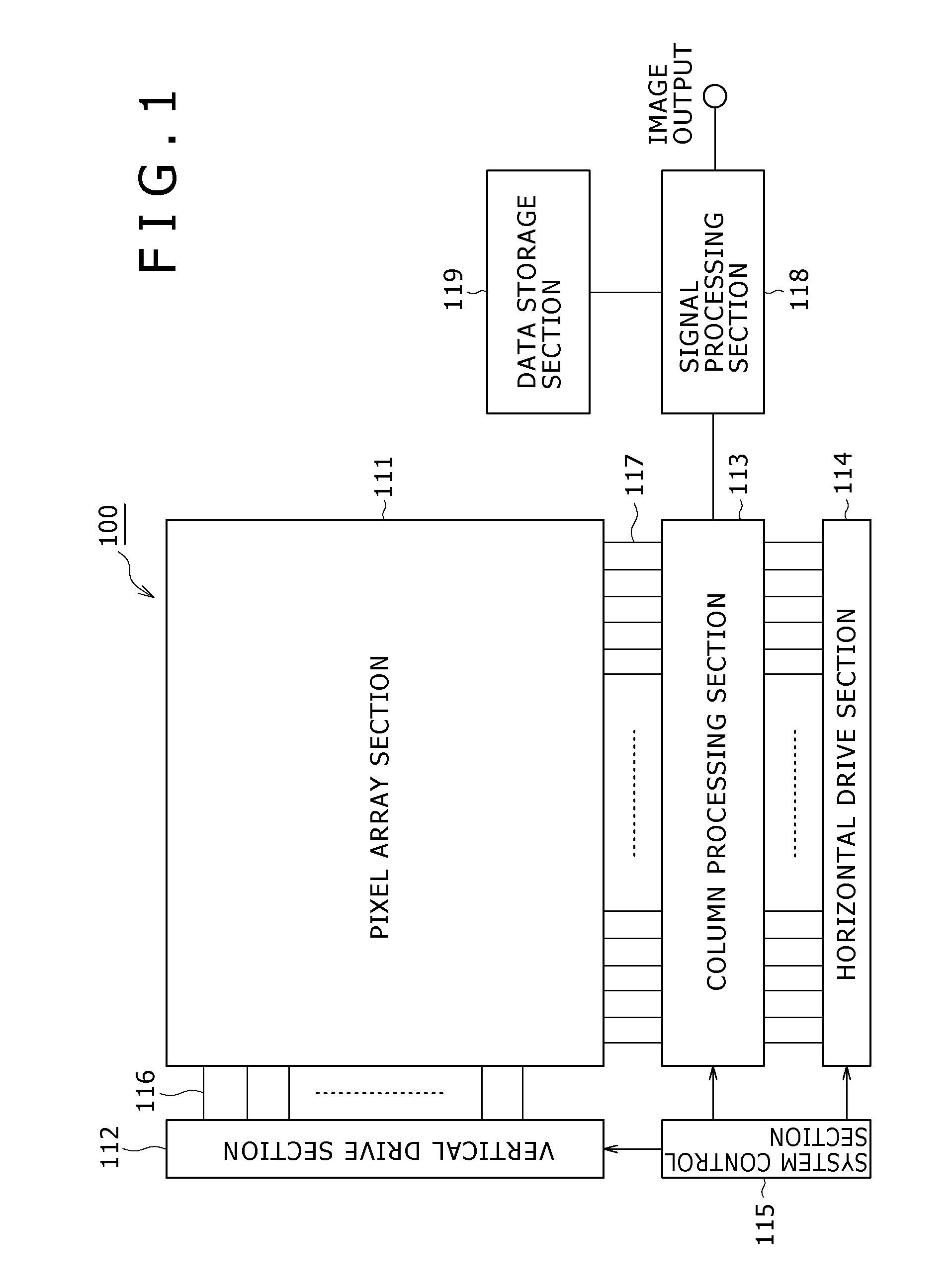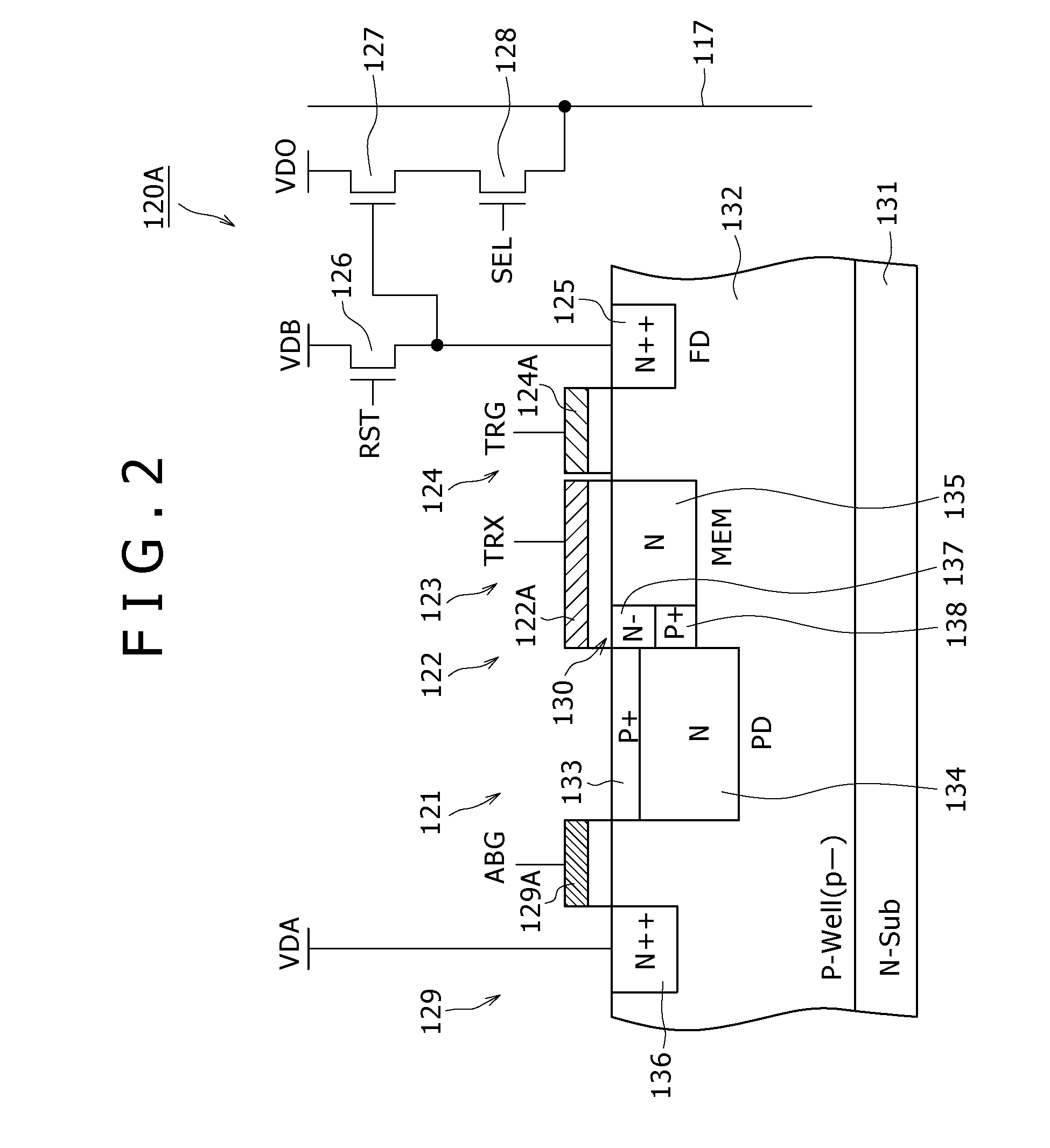Solid-state imaging device, method of manufacturing solid-state imaging device, and electronic apparatus
a solid-state imaging and manufacturing method technology, applied in the direction of radio frequency controlled devices, transistors, television systems, etc., can solve the problems of overflow path, difficult to control the potential in a region on the lower side of (in a region separate) and become more difficult to control the variations in impurity concentration, etc., to achieve high image quality and high quality
- Summary
- Abstract
- Description
- Claims
- Application Information
AI Technical Summary
Benefits of technology
Problems solved by technology
Method used
Image
Examples
first embodiment
[First Embodiment]
[0077]Now, the configuration of unit pixels 120A in a first embodiment will be described below referring to FIGS. 3A to 4C. In FIGS. 3A to 4C and in the following drawings, the same components as those in the unit pixel of FIG. 2 above will be denoted by the same reference symbols as used above, and detailed descriptions of them will be omitted.
[0078]FIG. 3A is a plan view showing the configuration of the unit pixel 120A, and FIG. 3B is a sectional view of the unit pixel 120A along line A-A′ in the plan view of FIG. 3A.
[0079]As shown in FIGS. 3A and 3B, a photodiode 121, a memory part 123, and a floating diffusion region 125 are disposed in the unit pixel 120A. The photodiode 121 and the memory part 123 are formed to have such an impurity concentration that a depletion state is obtained upon discharging of electric charge. The floating diffusion region 125 is formed to have an impurity concentration such as to permit electrical connection therewith of a wiring cont...
second embodiment
[Second Embodiment]
[0100]FIG. 6 shows a sectional view of a unit pixel 120B according to a second embodiment.
[0101]As shown in FIG. 6, in the unit pixel 120B, an impurity diffusion region 138B formed on the lower side of an impurity diffusion region 137 which becomes an overflow path 130 is so formed as to extend to the lower side (the substrate depth side) of a part or a whole part of a buried channel 135 constituting a memory part 123. In other words, the impurity diffusion region 138 is formed to be L-shaped in section shown in FIG. 6.
[0102]With the impurity diffusion region 138B thus extending to the lower side of the buried channel 135, a potential barrier similar to that between the N-type buried layer 134 and the buried channel 135 is formed also on the lower side of the memory part 123. As a result, the punch-through phenomenon which would take place between the N-type buried layer 134 and the buried channel 135 in the unit pixel 120B can be prevented from occurring. In addi...
third embodiment
[Third Embodiment]
[0111]FIG. 9 is a sectional view of a unit pixel 120C according to a third embodiment.
[0112]As shown in FIG. 9, in the unit pixel 120C, an impurity diffusion region 138C formed on the lower side of an impurity diffusion region 137 which becomes an overflow path 130 is extending to the lower side of a buried channel 135 constituting a memory part 123, like in the impurity diffusion region 138B of FIG. 6. Further, in the unit pixel 120C, an N-type buried layer 134C constituting a photodiode 121 is formed so as to extend to the lower side of the impurity diffusion region 138C. In other words, the impurity diffusion region 138C and the N-type buried layer 134C are formed to be L-shaped in section shown in FIG. 9.
[0113]With the N-type buried layer 134C thus extending to the lower side of the buried channel 135, formation of the overflow path 130 can be stabilized. Further, the electric charge generated through photoelectric conversion by light incident on a P-type well ...
PUM
 Login to View More
Login to View More Abstract
Description
Claims
Application Information
 Login to View More
Login to View More - R&D
- Intellectual Property
- Life Sciences
- Materials
- Tech Scout
- Unparalleled Data Quality
- Higher Quality Content
- 60% Fewer Hallucinations
Browse by: Latest US Patents, China's latest patents, Technical Efficacy Thesaurus, Application Domain, Technology Topic, Popular Technical Reports.
© 2025 PatSnap. All rights reserved.Legal|Privacy policy|Modern Slavery Act Transparency Statement|Sitemap|About US| Contact US: help@patsnap.com



